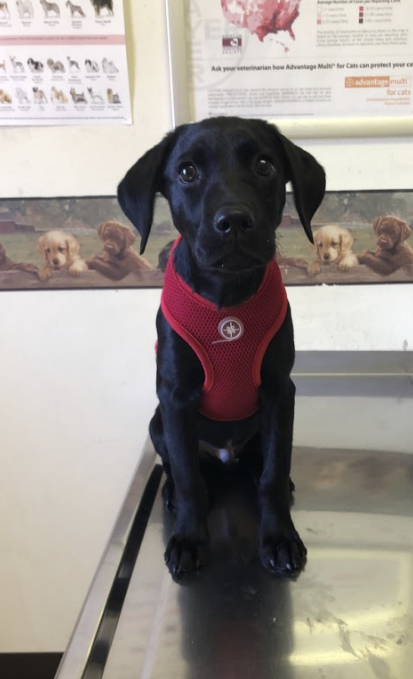Students balance pet care and school
September 8, 2019
Pets are often thought of as part of the family and are commonly used as emotional support, but all the fun comes with many responsibilities.
Roxanne Kadoun, a senior in psychology with an interest in animal behavior, said having a pet in college is completely different than growing up with one.
“I think what most college students struggle with when raising a puppy is building that relationship where the dog listens and respects you and sees you as their owner rather than a friend,” Kadoun said. “This is a crucial and the most vigorous aspect of training.”
Animals such as cats and dogs are common pets among households. Lydia Spurgeon, a sophomore in finance, recently adopted a 16-week-old black labrador retriever puppy named Jethro and said raising the puppy has made her feel more responsible as an adult.
“The ‘responsible adult’ aspect comes from having to clean up accidents, feed [Jethro], take him potty, make him exercise and still do all of my school, work and personal stuff,” Spurgeon said. “It really helps you learn how to manage your time and prioritize things, but with that also comes exhaustion.”
Spurgeon is currently taking 18 credits and working two jobs; she said Jethro helps her handle the stress by providing emotional support. In order to raise her puppy, Spurgeon said she changed her schedule to work around Jethro.
“Your sleep schedule will become much different; I’m usually awake by 8 a.m. or 9 a.m. at the absolute latest regardless of what time I went to bed because Jethro needs to potty and have breakfast at a consistent time each day.”
Spurgeon works with her roommates to help take care of the puppy — Kadoun being one of them.
“Raising a puppy can easily be compared with raising a toddler that never grows out of the ‘terrible twos,’” Kadoun said. “They can be manipulative, spontaneous and destructive — either on purpose or accidentally — this means they need a lot of attention while they are roaming around. Even though they can be tough to train, having a companion that is overly excited to see you at the end of the day makes it all worthwhile.”
While cats or dogs can be very popular among students, chickens and chinchillas can also be found in students’ homes. Ani Yam, a sophomore in industrial engineering, has owned a variety of animals.
“I used to have ducks, chickens and a chinchilla, and it was an interesting dynamic,” Yam said. “My chinchilla was definitely a more high maintenance pet compared to the ducks and chickens that lived outside.”
Yam said she would have to constantly clean her chinchilla’s cage as well as give him dust baths — a method where the animal rolls around in dust for various maintenance reasons.
“Chinchillas have really dense fur so they can’t get wet because then they’ll never dry and die from being cold and wet, Yam said. “So we give them a dust bath that they roll around in — I like to think of it as dry shampoo but for chinchillas.”
For Yam, the outdoor animals were easier to take care of than the indoor ones.
“On the other hand, my ducks and chickens would be satisfied as long as they were fed everyday and had roaming time outside of their pens,” Yam said. “Because they lived outside, they had the freedom to roam around, which made it easier on our part to take care of them.”
Whether the pets are indoor or outdoor animals, students have found ways to balance taking care of them and going to school.







